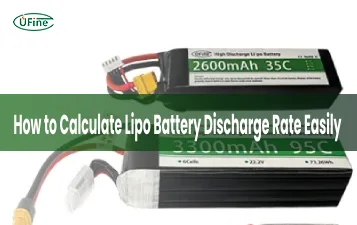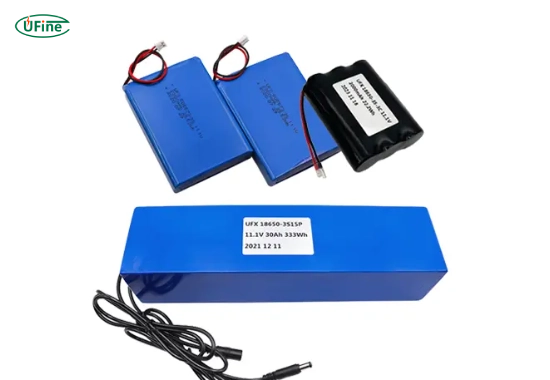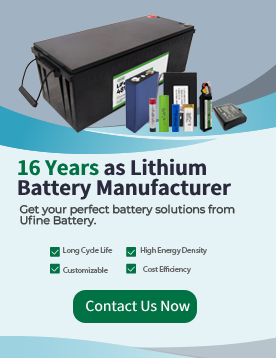The 11.1V Lipo battery is a popular power source for many electronic devices, especially RC models, drones, and airsoft guns. These batteries are known for their high energy density, lightweight design, and powerful performance. But what makes them so special? This guide will explore everything you need to know about the 11.1V Lipo battery, including its features, benefits, and common applications.
Part 1. What is an 11.1V Lipo battery?
An 11.1V Lipo battery is a Lithium Polymer (LiPo) rechargeable battery with a nominal voltage of 11.1 volts. It consists of three cells (3S), each with a nominal voltage of 3.7V, providing the total voltage.
Lipo batteries are widely used in various applications due to their high discharge rate, lightweight structure, and compact size. Unlike traditional NiMH or NiCd batteries, LiPo batteries offer better efficiency and performance, making them a preferred choice for high-power applications.
Part 2. How does an 11.1V Lipo battery work?
Lipo batteries store and release energy through a chemical reaction within their cells. Lithium ions move from the positive electrode (cathode) to the negative electrode (anode) when the battery is charged. During discharge, the process reverses, and the stored energy powers the connected device.
Each Lipo cell operates between 3.0V (empty) and 4.2V (fully charged). It is crucial not to discharge below 3.0V per cell to maintain battery health, as this can permanently damage the battery.
Part 3. Key features of an 11.1V Lipo battery
The 11.1V Lipo battery comes with several essential features that make it a top choice for high-performance applications:
- High Energy Density: Provides more power in a smaller size than other battery types.
- Lightweight Design: Ideal for applications where weight is a critical factor.
- High Discharge Rate: Supports high power output, making it perfect for RC vehicles and drones.
- Rechargeable: This can be charged multiple times, reducing long-term costs.
- Low Self-Discharge Rate: Holds charge longer when not in use.
Part 4. Benefits of using an 11.1V Lipo battery
Why choose an 11.1V Lipo battery over other battery types? Here are some key benefits:
- Increased Power Output: Lipo batteries deliver consistent and high power, making them perfect for demanding applications like drones and RC cars.
- Lightweight and Compact: Compared to other rechargeable batteries, LiPo batteries provide more power and less weight, which is crucial for aerial devices like drones.
- Faster Charging Time: Many high-quality Lipo chargers can recharge these batteries quickly, reducing downtime between uses.
- Longer Battery Life: An 11.1V Lipo battery can last hundreds of charge cycles with proper care and maintenance.
- Versatile Applications: They are used in various industries, including hobby electronics, robotics, and professional-grade devices.
Part 5. Common applications of an 11.1V Lipo battery
The 11.1V Lipo battery is used in a wide range of applications. Some of the most popular include:
- RC Cars and Trucks: Lipo batteries provide the high power output needed for high-speed RC vehicles.
- Drones and Quadcopters: Due to their light weight and high energy density, drones rely on LiPo batteries for longer flight times.
- Airsoft Guns: Many high-performance airsoft guns use 11.1V Lipo batteries for faster response time and increased firing rate.
- Robotics and DIY Projects: Lipo batteries are commonly used in robotics, automation, and DIY electronics projects.
- Medical and Industrial Equipment: Lithium batteries are used in specific medical devices and industrial tools due to their reliability and efficiency.
Part 6. How to safely charge an 11.1V Lipo battery?
How do you safely charge an 11.1V Lipo battery?
To safely charge an 11.1V Lipo battery, follow these steps:
- Use a compatible Lipo charger: Never use a regular battery charger.
- Set the correct charging voltage and current: A standard charge rate is 1C (e.g., a 2200mAh battery should be charged at 2.2A).
- Keep in a fireproof bag: LiPo batteries can catch fire if overcharged or damaged.
- Never leave charging batteries unattended: Always monitor the charging process.
- Avoid overcharging: Do not exceed 4.2V per cell.
Part 7. Why is an 11.1V Lipo battery made of 3.7V cells?
Many wonder why an 11.1V Lipo battery is made of 3.7V cells.
The answer is simple. A single Lipo cell has a nominal voltage of 3.7V. To get a higher voltage, manufacturers combine multiple cells in series.
An 11.1V Lipo battery comprises three 3.7V cells connected in series (3S). This means:
- 1 cell = 3.7V
- 2 cells (2S) = 7.4V
- 3 cells (3S) = 11.1V
Each cell operates between 3.0V (empty) and 4.2V (fully charged). So, when fully charged, an 11.1V Lipo battery reaches 12.6V (4.2V × 3). To avoid damage, it should not go below 9.0V (3.0V × 3) when discharged.
This modular design allows different voltage levels for various applications. For example:
- 7.4V Lipo (2S): Used in smaller RC cars and airsoft guns.
- 11.1V Lipo (3S): Common in drones, RC cars, and high-performance airsoft guns.
- 14.8V Lipo (4S) and higher: Used in racing drones and industrial tools.
Part 8. How do you store an 11.1V Lipo battery properly?
How should you store an 11.1V Lipo battery to prolong its life?
To store an 11.1V Lipo battery properly:
- Keep it at a 50% charge (around 3.8V per cell).
- Store in a cool, dry place (15-25°C).
- Use a fireproof storage bag for added safety.
- Avoid metal contact to prevent short circuits.
- Check battery condition regularly to detect any swelling or damage.
Part 9. Common mistakes when using an 11.1V Lipo battery
Avoid these common mistakes to extend the life of your 11.1V Lipo battery:
- Over-discharging: Letting voltage drop below 3.0V per cell can permanently damage the battery.
- Overcharging: Charging beyond 4.2V per cell can cause overheating.
- Using a damaged battery: Swollen or punctured Lipo batteries should be disposed of immediately.
- Storing at full charge: Long-term storage at 4.2V per cell reduces battery lifespan.
- Charging without supervision: Always monitor the battery while charging.
Part 10. How to dispose of an 11.1V Lipo battery?
How do you safely dispose of an 11.1V Lipo battery?
To safely dispose of an 11.1V Lipo battery:
- Discharge the battery completely using a discharge function on your charger.
- Submerge the battery in salt water for a few days to neutralise any remaining charge.
- Wrap them with electrical tape to prevent short circuits.
- Take it to a battery recycling centre. Never throw it in the regular trash.
Part 11. FAQs about the 11.1V Lipo battery
Can I use an 11.1V Lipo battery on any device?
Only use it in devices designed for 11.1V power input to avoid damage.
How long does an 11.1V Lipo battery last?
With proper care, it can last 300-500 charge cycles.
Can I charge an 11.1V Lipo battery with a regular charger?
No, you must use a Lipo-specific charger to prevent overcharging and fire hazards.
Why is my 11.1V Lipo battery swelling?
Swelling occurs due to overcharging, over-discharging, or internal damage. Stop using it immediately.
What happens if I over-discharge my Lipo battery?
Over-discharging can permanently damage the battery and make it unsafe to use.
Related Tags:
More Articles

LiPo Battery Discharge Rate Guide & Calculation Tips
Understand LiPo battery discharge rates, C-ratings, and how to calculate max current. Essential guide for RC, drones, and electronics users.
High‑Capacity 3S LiPo Batteries: 5000 mAh vs. 10000 mAh
Compare 3S LiPo 5000mAh vs 10000mAh batteries by weight, power, and use. Find the best fit for your drone, RC car, or boat setup.
Top 5 Applications for Small 3S LiPo Batteries
Small 3S LiPo batteries power drones, RC gear, wearables, and robotics with high energy and low weight. Making them ideal for compact electronics projects.
Building and Charging Your Own 3S LiPo Pack: A Step‑by‑Step Guide
Learn how to build, balance, and charge a 3S LiPo battery pack safely at home with this complete DIY guide for hobbyists and beginners.
How to Choose the Right LiPo Battery Plug Type?
Discover the best LiPo battery plug types, how to choose them, and expert tips for safe usage, soldering, and maintenance.




